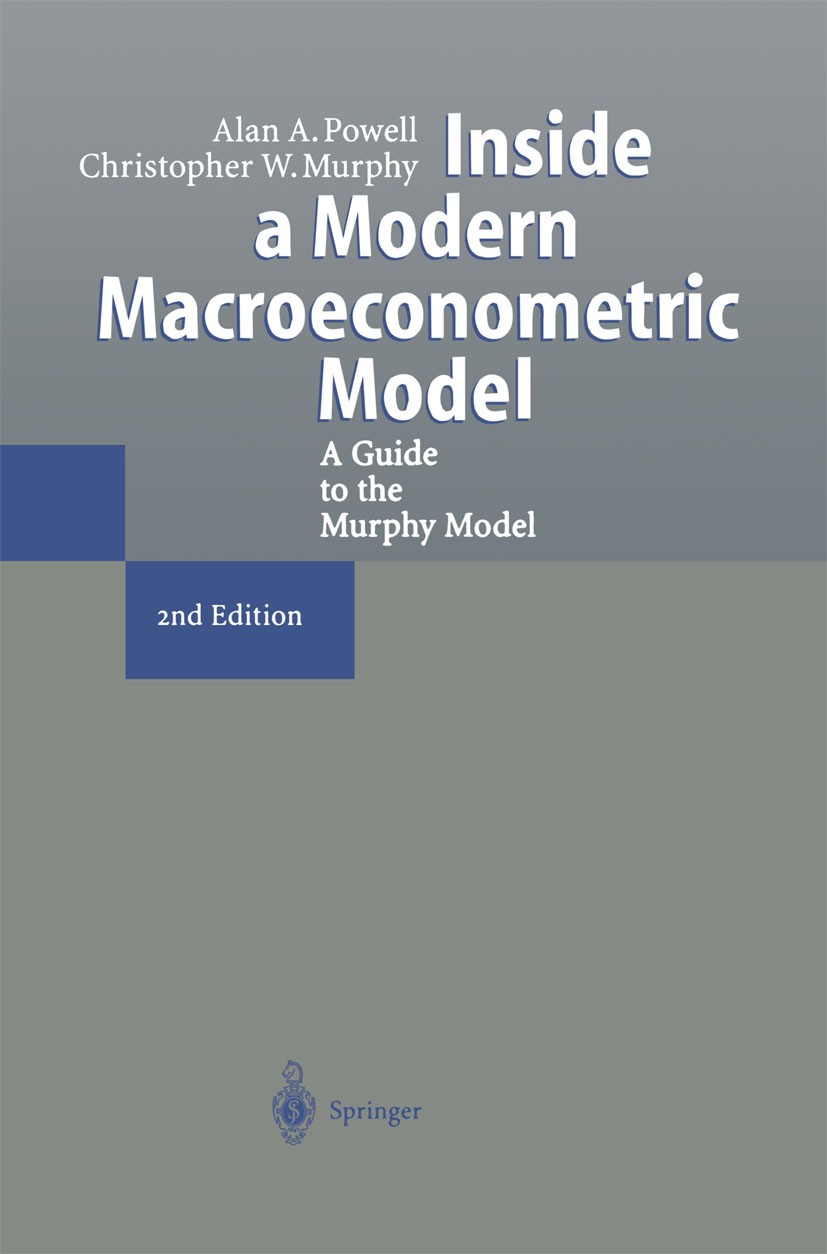| 书目名称 | Inside a Modern Macroeconometric Model | | 副标题 | A Guide to the Murph | | 编辑 | Alan A. Powell,Christopher W. Murphy | | 视频video | http://file.papertrans.cn/468/467805/467805.mp4 | | 概述 | Principles referred to in the text are illustrated by numerical examples.PC users can verify how various key ideas work in practice.Archetype, miniature and stylised models are used to explain princip | | 图书封面 |  | | 描述 | As Ken Wallis (1993) has pOinted out, all macroeconomic forecasters and policy analysts use economic models. That is, they have a way of going from assumptions about macroeconomic policy and the international environment, to a prediction of the likely future state of the economy. Some people do this in their heads. Increasingly though, forecasting and policy analysis is based on a formal, explicit model, represented by a set of mathematical equations and solved by computer. This provides a framework for handling, in a consistent and systematic manner, the ever-increasing amounts of relevant information. Macroeconometric modelling though, is an inexact science. A manageable model must focus only on the major driving forces in a complex economy made up of millions of households and fIrms. International economic agencies such as the IMF and OECD, and most treasuries and central banks in western countries, use macroeconometric models in their forecasting and policy analysis. Models are also used for teaching and research in universities, as well as for commercial forecasting in the private sector. | | 出版日期 | Book 1997Latest edition | | 关键词 | Simulation; econometrics; economics; employment; financial markets; forecasting; linear optimization; produ | | 版次 | 2 | | doi | https://doi.org/10.1007/978-3-642-59069-6 | | isbn_softcover | 978-3-642-63836-7 | | isbn_ebook | 978-3-642-59069-6 | | copyright | Springer-Verlag Berlin Heidelberg 1997 |
The information of publication is updating

|
|
 |Archiver|手机版|小黑屋|
派博传思国际
( 京公网安备110108008328)
GMT+8, 2025-11-21 12:02
|Archiver|手机版|小黑屋|
派博传思国际
( 京公网安备110108008328)
GMT+8, 2025-11-21 12:02


